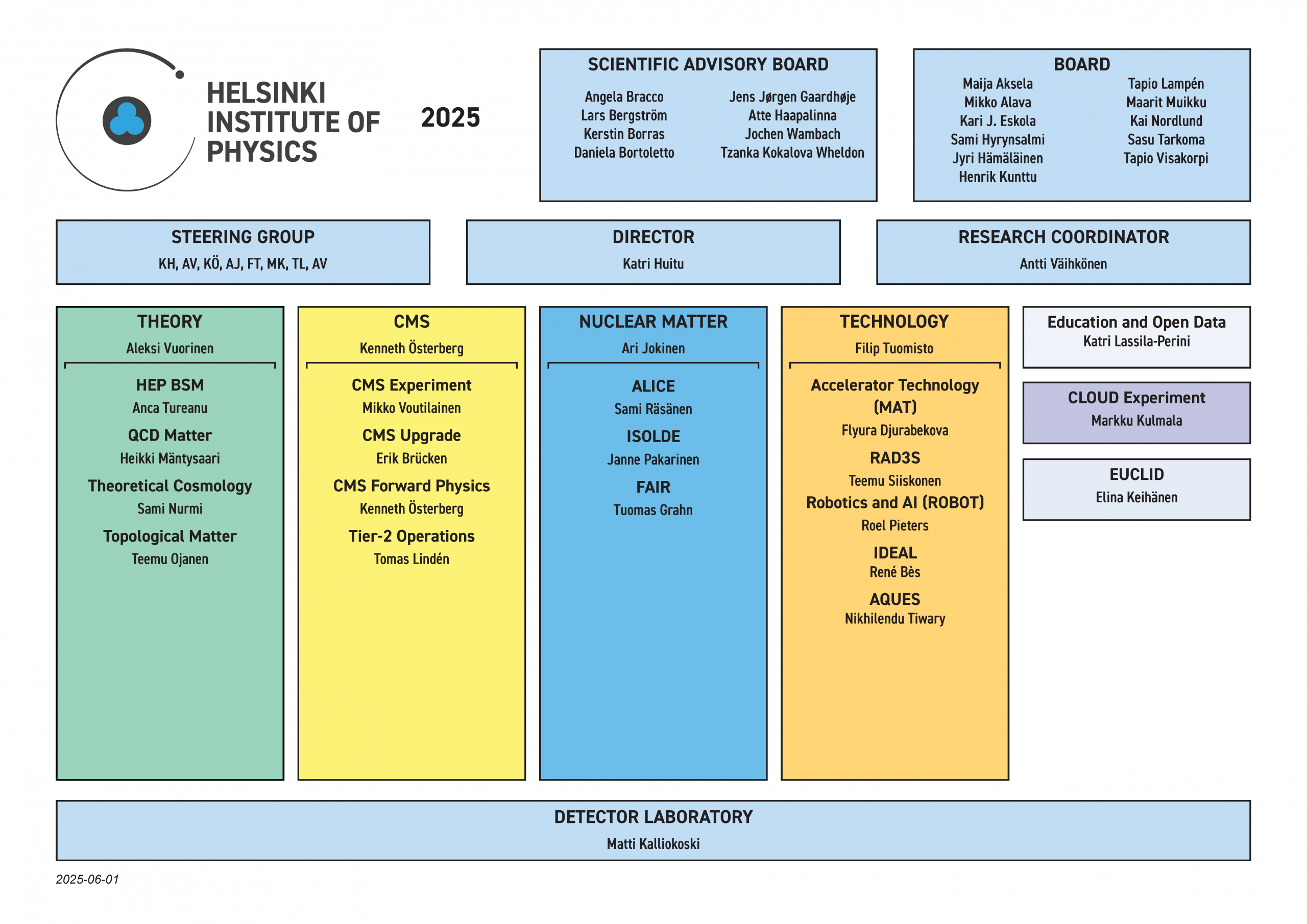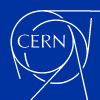








About Us – Our Mission
The Helsinki Institute of Physics is a physics research institute that is operated jointly by the University of Helsinki, Aalto University, the University of Jyväskylä, the Lappeenranta-Lahti University of Technology, and the Tampere University, with the Finnish Radiation and Nuclear Safety Authority (STUK) as a fixed-term interim member since 2018. The research activity at the institute covers an extensive range of subjects in theoretical physics and experimental subatomic physics. The mandate of the institute is to carry out and facilitate research in basic and applied physics as well as in physics research and technology development at international accelerator laboratories. The institute is responsible for the Finnish research collaboration with CERN. Also, the institute coordinates the Finnish contribution to the FAIR laboratory (Facility for Antiproton and Ion Research) currently under construction in Darmstadt, Germany.
- Long-term Strategy, 2025-2028
- Toimeenpanosuunnitelma vuodelle 2026 kaudella 2025-2028 / Implementation Plan for 2025 in the 2025–2028 period
- Communications Plan 2024-2027
Organization
The Helsinki Institute of Physics is structured and organized by the following bodies (picture of organization):
- Management and Services
- Programme Directors
- Board
- Scientific Advisory Board
and is governed by
- Regulations / Johtosääntö
- Rules of procedure / Työjärjestys
- Toimintakäsikirja (intranet)
History
The legislation, by which the Institute was founded, was passed by the Finnish Parliament in summer 1996 and operations began on September 1 of the same year. The foundation for the Institute was provided by the three previous Helsinki-based institutes: SEFT, TFT (University of Helsinki) and HTI (Helsinki University of Technology), which were merged into the new organization.
Experimental research in elementary particle physics was started from scratch in 1965 in Finland. This book (in Finnish) documents the Finnish experimental research in the field from the very beginning to the discovery of the Higgs boson in 2012 at CERN. During this time several large-scale experimental facilities were built all over the world for the study of the basic structure of matter. They have significantly contributed to our understanding of the microscopic structure of matter. Finnish researchers have participated in the research on several of these facilities.
Helsinki Institute of Physics – the first twenty years 1996-2016
Kuplakammiofysiikasta Higgsin bosoniin
Additional information by J. Tuominiemi (in Finnish):
Facts
Check out our latest HIP Annual Report 2024 (PDF).
More annual reports in Publications or in the Annual Gallery View.
Quality Assurance
The mission of HIP is to carry out and facilitate research and graduate education in basic and applied physics as well as in physics research and technology development at international accelerator laboratories, CERN and FAIR.
An essential component of the HIP quality assurance system is the international Scientific Advisory Board (SAB) composed of leading experts in the field. The SAB evaluates the progress reports of the existing projects and proposals for new ones. Evaluations are based on written material and annual site visits. During the site visits the HIP Board and SAB have a joint session, exit-interview, which gives an opportunity for informal exchange of views in addition to the written report.
The quality assurance system as a whole is documented in the Operations Manual, which will be accessible through intranet.






